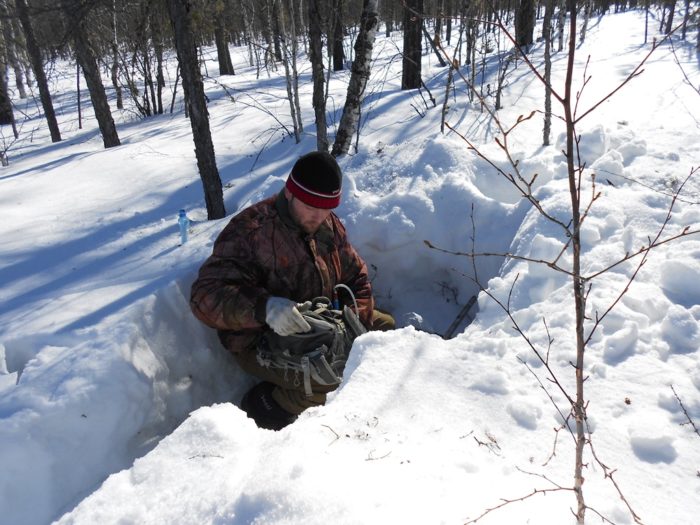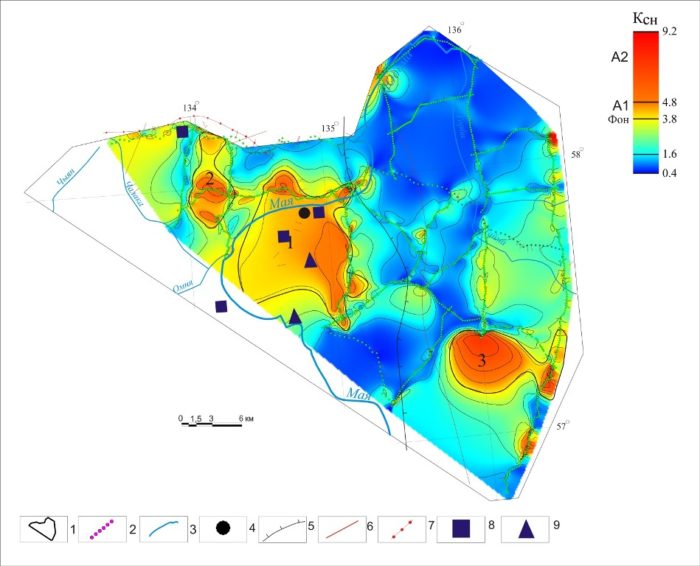Gas and geochemical surveys on snow cover are performed in oil and gas prospecting and environmental studies. The survey is carried out in winter (February-March) independently or as part of seismic surveys in seismic profiles.
Snow sampling is performed on shallow pits in the snow cover at seismic pickets. The geochemical sampling rate for profiles is 200 to 1000 m, depending on the scale of the survey. Snow sampling is carried out in a 0.7-1.0-liter container with a sealed cover, in 15-20 cm interval from the soil cover. For the chromatographic analysis, polyphenylene sulfide and turboprop gases are taken into a barbator with a barrier liquid.
The geochemical snow cover sampling methodology and technology have been tested for 40 years at “benchmark” facilities in Eastern Siberia (Atovsky oil and gas condensate field, Danilovsky oil and gas field, Srednebotuobinskoye and Taas-Yuryakh fields) and prospected facilities.
Following the gas and geochemical snow cover surveying:
- the structure of hydrocarbon and non-hydrocarbon gas concentration fields under the snow cover and their relationship to the structural-tectonic structure of the sedimentary cover is studied;
- geochemical anomalies of the “naphthenic” nature are delineated;
- the results of the gas and geochemical survey are coordinated with the results of seismic common point depth prospecting and near-field time-domain electromagnetic sounding;
- tectonic disturbances and deep snaps are mapped based on the gas and geochemical and helium surveys;
- the “screening” and “conducting” properties of deep snaps and tectonic disturbances, delineated in the sedimentary section based on the seismic data, are identified;
- geochemical zoning of the territory is carried out in terms of the degree of prospects, phase saturation, and conservation conditions of hydrocarbon accumulations;
- a separate forecast is given for the phase saturation of local structures (objects) revealed by geophysical methods;
- conservation conditions of hydrocarbon accumulations in oil-promising zones and traprocks are evaluated;
- recommendations are presented on the selection of priority areas (facilities) for performing complex oil and gas prospecting and placement of prospecting boreholes.
In terms of ecology, the results of snow surveys enable to estimate the degree of pollution of the natural environment both at the initial stage of geological prospecting and during the development of deposits.

Field selection of geochemical samples from the snow cover 
Assessment of oil and gas potential prospects of Yudomsky area according to snow survey data
